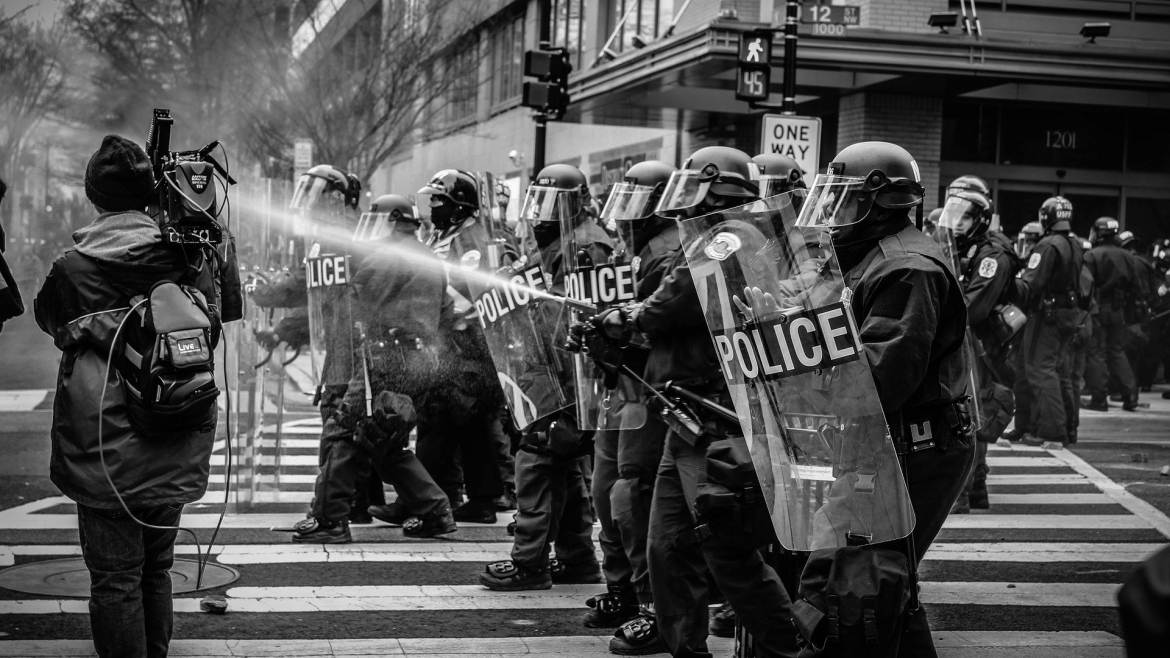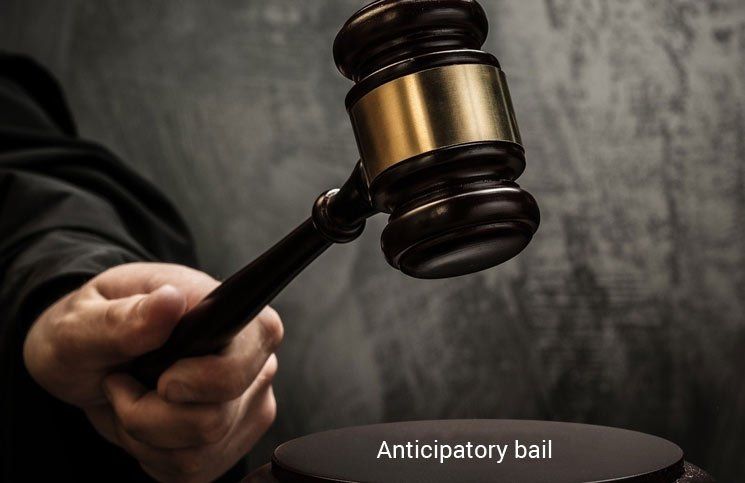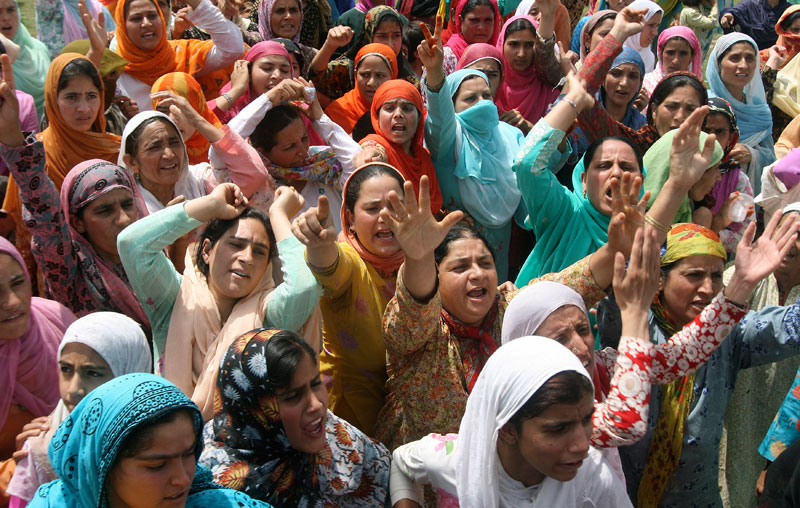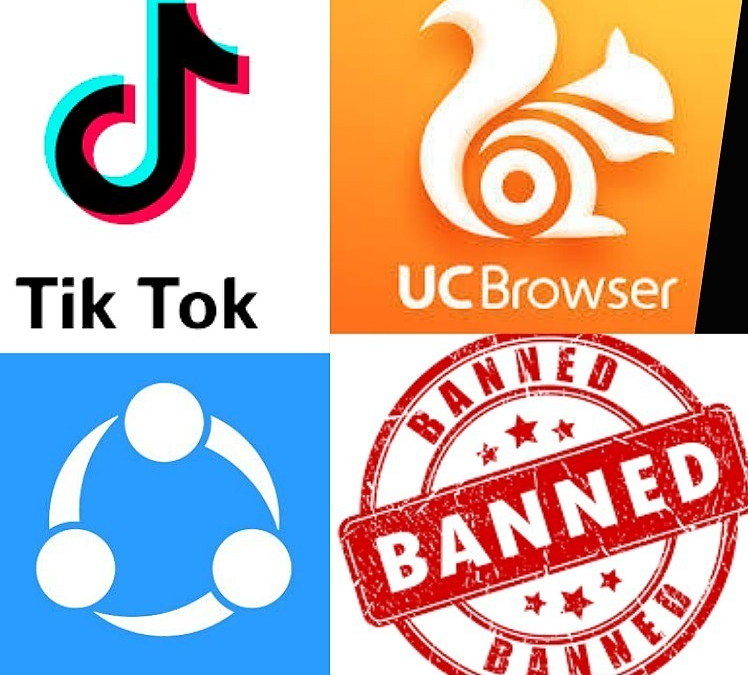ABSTRACT
Child labor refers to the employment of children in any work that deprives children of their childhood, interferes with their ability to attend regular school, and is mentally, physically, socially, or morally dangerous and harmful. Of an estimated 215 child laborers around the globe: approximately 114 million (53%) are in Asia and the Pacific; 14 million (7%) live in Latin America; and 65 million (30%) live in sub-Saharan Africa. The global number of children in child labor has declined by one-third since 2000, from 246 million to 168 million children. More than half of them, 85 million, are in hazardous work (down from 171 million in 2000). Asia and the Pacific still have the largest numbers (almost 78 million or 9.3% of the child population), but Sub-Saharan Africa continues to be the region with the highest incidence of child labor (59 million, over 21%). There are 13 million (8.8%) of children in child labor in Latin America and the Caribbean and in the Middle East and North Africa, there are 9.2 million (8.4%). Agriculture remains by far the most important sector where child laborers can be found (98 million, or 59%), but the problems are not negligible in services (54 million) and industry (12 million) – mostly in the informal economy. Child labor among girls fell by 40% since 2000, compared to 25%for boys. Child labor in India is addressed by the Child Labor Act 1986 and the National Child Labor project. Today in India, there are more than 10.12 million children who are spending their childhood learning carpet-weaving, beedi-rolling, domestic labor, agriculture, firework and apparel manufacture, and countless other occupations instead of going to school and receiving a quality education.
I. INTRODUCTION
According to data from Census 2011, the number of child laborer’s in India is 10.1 million of which 5.6 million are boys and 4.5 million are girls. A total of 152 million children – 64 million girls and 88 million boys – are estimated to be in child labor globally, accounting for almost one in ten of all children worldwide.
Despite rates of child labor declining over the last few years, children are still being used in some severe forms of child labor such as bonded labor, child soldiers, and trafficking. Across India, child laborers can be found in a variety of industries: brick kilns, carpet weaving, garment making, domestic service, food and refreshment services (such as tea stalls), agriculture, fisheries, and mining. Children are also at risk of various other forms of exploitation including sexual exploitation and the production of child pornography, including online. Child labor and exploitation are the results of many factors, including poverty, social norms condoning them, lack of decent work opportunities for adults and adolescents, migration, and emergencies. These factors are not only the cause but also a consequence of social inequities reinforced by discrimination.
Children belong in schools, not workplaces. Child labor deprives children of their right to go to school and reinforces intergenerational cycles of poverty. Child labor acts as a major barrier to education, affecting both attendance and performance in school.
The continuing persistence of child labor and exploitation poses a threat to national economies and has severe negative short and long-term consequences for children such as denial of education and undermining physical and mental health. Child trafficking is also linked to child labor and it always results in child abuse. Trafficked children face all forms of abuse-physical, mental, sexual and emotional. Trafficked children are subjected to prostitution, forced into marriage or illegally adopted; they provide cheap or unpaid labor, are forced to work as house servants or beggars and may be recruited into armed groups.
CONSEQUENCES OF CHILD LABOUR
The presence of a large number of child laborer’s is regarded as a serious issue in terms of economic welfare. Children who work fail to get necessary education. They do not get the opportunity to develop physically, intellectually, emotionally and psychologically. In terms of the physical condition of children, children are not ready for long monotonous work because they become exhausted more quickly than adults. This reduces their physical conditions and makes the children more vulnerable to disease. Children in hazardous working conditions are even in worse condition. A child who work, instead of going to school, will remain illiterate which limits their ability to contribute to their own well being as well as to the community they live in. Child labor has long term adverse effects for India. To keep an economy prospering, a vital criterion is to have an educated workforce equipped with relevant skills for the needs of the industries. The young laborer’s today, will be part of India’s human capital tomorrow. Child labor undoubtedly results in a trade-off with human capital accumulation. Child labor in India are employed with the majority (70%) in agriculture some in low-skilled labor-intensive sectors such as sari weaving or as domestic helpers, which require neither formal education nor training, but some in heavy industry such as coal mining. According to the International Labor Organization (ILO), there are tremendous economic benefits for developing nations by sending children to school instead of work. Without education, children do not gain the necessary skills such as English literacy and technical aptitude that will increase their productivity to enable them to secure higher-skilled jobs in future with higher wages that will lift them out of poverty.
DIAMOND INDUSTRY
In the year 1999, the International Labor Organization co-published a report with Universal Alliance of Diamond Workers, a trade union. The ILO report claimed that child labor is prevalent in the Indian diamond industry. International Confederation of Free Trade Unions (ICFTU) in a separate 1997 press release observed that child labor continued to flourish in India’s diamond industry. Not everyone agreed with these claims. The South Gujarat Diamond Workers Association, another trade union, acknowledged child labor is present but it is not systematic, is less than 1% and against local industry norms. Local diamond industry businessmen too downplayed these charges
According to the 1999 ILO paper, India annually cuts and polishes 70 percent of the world’s diamonds by weight or 40 percent by value. Additionally, India contributes 95 percent of the emeralds, 85 percent of the rubies, and 65 percent of the sapphires worldwide. India processes these diamonds and gems using traditional labor-intensive methods. About 1.5 million people are employed in the diamond industry, mostly in the unorganized sector. The industry is fragmented into small units, each employing a few workers. The industry has not scaled up, organized, and big operators absent. The ILO paper claims that this is to avoid the complex labor laws of India. The export order is split, work is subcontracted through many middlemen, and most workers do not know the name of enterprise with the export order. In this environment, claims the ILO report, exact number of child laborer’s in India’s diamond and gem industry is unknown; they estimate that child laborer’s in 1997 were between 10,000 and 20,000 out of 1.5 million total workers (about 1 in 100). The ILO report claims the causes for child labor include parents who send their children to work because they see education as expensive, education quality offering no real value, while artisan work in diamond and gem industry to be more remunerative as the child grows up. A more recent study from 2005, conducted at 663 manufacturing units at 21 different locations in India’s diamond and gem industry, claims incidence rates of child labor have dropped to 0.31%.
FIREWORKS MANUFACTURE
The town of Sivakasi in South India, known for its fireworks and matchsticks industries, has been reported to employ child labor in the production of fireworks. In 2011, Sivakasi, Tamil Nadu was home to over 9,500 firecracker factories and produced almost 100 percent of total fireworks output in India. The fireworks industry employed about 150,000 people at an average of 15 employees per factory. Most of these were in unorganized sector, with a few registered and organized companies.
In 1989, Shubh Bhardwaj reported that child labour is present in India’s fireworks industry, and safety practices poor. Child labour is common in small shed operation in the unorganized sector. Only 4 companies scaled up and were in the organized sector with over 500 employees; the larger companies did not employ children and had superior safety practices and resources. The child labour in small, unorganized sector operations suffered long working hours, low wages, unsafe conditions and tiring schedules. A more recent 2002 report by international labour organization (ILO), claimsthat child labour is significant in Tamil Nadu’s fireworks, matches or incense sticks industries. However, these children do not work in the formal economy and corporate establishments that produce for export. The child laborers in manufacturing typically toil in supply chains producing for the domestic market of fireworks, matches or incense sticks. The ILO report claims that as the demand for these products has grown, the formal economy and corporate establishments have not expanded to meet the demand, rather home-based production operations have mushroomed. This has increased the potential of child labour. Such hidden operations make research and effective action difficult, suggests ILO.
SILK MANUFACTURE
A 2003 Human Rights Watch report, claims children as young as five years old are employed and work for up to 12 hours a day and six to seven days a week in silk industry. These children, claims, are bonded labour; even though the government of India denies existence of bonded child labour, these silk industries children are easy to find in Karnataka and Tamil Nadu, claims Children are forced to dip their hands in scalding water to palpate the cocoons and are often paid less than Rs. 10 per day. In 2012, a German news investigative report claimed that in states like Karnataka, non-governmental organizations had found up to 15,000 children working in the 1,100 silk factories in 1998. In other places, thousands of bonded child laborers were present in 1995. But today, after UNICEF and NGOs got involved, child labour figure is drastically lower, with the total estimated to be fewer than a thousand child laborers. The released children were back in school, claims the report.
CARPET WEAVING
Siddartha Kara finds about 20% of carpets manufactured in India could involve child labour. He notes, “Determining the extent to which the hand-made carpet supply chain from India to the U.S.A. is tainted by slavery and child labour requires an additional exercise in supply chain tracing.” Kara’s study also finds variation in child labour practices between ethnic and religious groups. Kara and colleagues report highest level of child labour in Muslim community carpet operations, and the presence of debt bonded child laborers in Muslim villages.
DOMESTIC LABOUR
Official estimates for child labour working as domestic labour and in restaurants is more than 2,500,000 while NGOs estimate the figure to be around 20 million. The Government of India expanded the coverage of The Child Labour Prohibition and Regulation Act and banned the employment of children as domestic workers and as workers in restaurants, dhabas, hotels, spas and resorts effective from 10 October 2006.
MINING
Despite laws enacted in 1952 which prohibited employment of people under the age of 18, primitive coal mines in Meghalaya were caught employing children under the age of 18. This caught the attention of international media in 2013.
BRICK KILNS
A large number of brick kilns around Bangalore and Hosur employ bonded and child labour, under the pretext of offering high wages. In 2018, 22 bonded laborer’s including children were rescued from a brick kiln near Anekal in Bangalore and the employers were arrested by the police. The employers allegedly provided poor food and working conditions.
LEGISLATION FOR CHILD LABOUR IN INDIA:
The first protective legislation for child labour in India was seen in 1881 in the form if Indian factories Act which had the provisions prohibiting employment of children below 7 years, limiting the working hours for children to 9 hours a day and providing 4 holidays in a month and rest hours. This was actually made by the ruling British Government to decrease the production in Indian industries through some legal restrictions. It may be submitted that the labour legislations in India including protective legislation for children have been greatly influenced with the result of various Conventions and Recommendations adopted by International Labour Organization. Besides Constitutional provisions, there are several legislative enactments which
Provide legal protection to children in various occupations :
- The Children (Pledging of Labour) Act, 1933
- The Employment of Children Act, 1938
- The Minimum Wages, Act 1948 and rules made thereunder by the government
- The Factories Act, 1948
- The Plantations Labour Act, 1951
- The Mines Act, 1952
- The Merchant Shipping Act, 1958
- The Motor Transport Workers’ Act, 1961
- The Apprentices Act, 1961
- The Atomic Energy Act, 1962
- The Beedi and Cigar Workers (Conditions of Employment) Act, 1966
- The Shops and Establishment Act in Various States, and Child Labour (Prohibition and Regulation) Act, 1986
INDIAN CONSTITUTION
Article 21 of the Constitution of India guarantees the right to life and liberty. The Indian Supreme Court has interpreted the right of liberty to include, among other things, the right of free movement, the right to eat, sleep and work when one pleases, the right to be free from inhuman and degrading treatment, the right to integrity and dignity of the person, the right to the benefits of protective labor legislation, and the right to speedy justice. The practice of bonded labor violates all of these constitutionally-mandated rights. Article 23 of the constitution prohibits the practice of debt bondage and other forms of slavery both modern and ancient:
Traffic in human beings and begar and other similar forms of forced labour are prohibited and any contravention of this provision shall be an offence punishable in accordance with the law.
Begar is an ancient caste-based obligation, a “form of forced labour under which a person is compelled to work without receiving any remuneration. Other similar forms of forced labour was interpreted expansively by the Supreme Court in 1982, when it ruled in the seminal ‘Asiad Workers’ Case that both unpaid and paid labour were prohibited by Article 23, so long as the element of force or compulsion was present in the worker’s ongoing services to the employer. Examples of force include overt physical compulsion and compulsion under threat of legal sanction (as for example in the case of an allegedly unpaid debt), as well as more subtle forms of compulsion, including “compulsion arising from hunger and poverty, want and destitution”. “Given the dire economic straits of most Indians, this definition could bring hundreds of millions of people within its scope. The Supreme Court went on; however, to provide a helpful rule for determining exactly what situations constitute forced labor. “Where a person provides labour or service to another for remuneration which is less than minimum wage, the labour or service provided by him clearly falls within the scope and ambit of the word `forced labour’. All labor rewarded with less than the minimum wage, then, constitutes forced labor and violates the Constitution of India”.In another landmark case, this one brought on behalf of a group of bonded quarry workers in the early 1980s, the Supreme Court ruled that “It is the plainest requirement of Articles 21 and 23 of the Constitution that bonded laborers must be identified and released and on release, they must be suitably rehabilitated. Any failure of action on the part of the State Governments in implementing the provisions of the Bonded Labour System (Abolition) Act would be the clearest violation of Article 21 and Article 23 of the Constitution.”Article 24 prohibits the employment of children in factories, mines, and other hazardous occupations. Together, Articles 23 and 24 are placed under the heading “Right against Exploitation,” one of India’s constitutionally-proclaimed fundamental rights.
Article 39 requires the state to “direct its policy toward securing”:
(e) That the health and strength of workers and the tender age of children are not abused and that citizens are not forced by economic necessity to enter avocations unsuited to their age or strength.
(f) That children are given opportunities and facilities to develop in a healthy manner and in conditions of freedom and dignity and that childhood and youth are protected against exploitation and against moral and material abandonment.”
Child Labour (Prohibition and Regulation) Act (1986) was the culmination of efforts and ideas that emerged from the deliberations and recommendations of various committees on child labour. Significant among them were the National Commission on Labour (1966-1969), the Gurupadaswamy Committee on Child Labour (1979) and the Sanat Mehta Committee (1984). The Act aims to prohibit the entry of children into hazardous occupations and to regulate the services of children in non-hazardous occupations. In particular it is aimed at (i) the banning of the employment of children, i.e. those who have not completed their 14th year, in 18 specified occupations and 65 processes; (ii) laying down a procedure to make additions to the schedule of banned occupations or processes; (iii) regulating the working conditions of children in occupations where they are not prohibited from working; (iv) laying down penalties for employment of children in violation of the provisions of this Act and other Acts which forbid the employment of children; (v)bringing uniformity in the definition of the child in related laws. The Child Labour (Prohibition and Regulation Amendment Bill), 2012 was introduced in Rajya Sabha on 4 December, 2012 further to amend the Child Labour (Prohibition and Regulation) Act, 1986. The amendment also seeks a blanket ban on employing children below 18 years in hazardous industries like mining. The Bill is referred to Standing Committee on Labour and Employment.
APPLICABLE INTERNATIONAL LAW
The practice of bonded child labor violates the following international human rights conventions; India is a party to all of them, and as such is legally bound to comply with their terms.
- Convention on the Suppression of Slave Trade and Slavery, 1926
This convention requires signatories to “prevent and suppress the slave trade” and “to bring about, progressively and as soon as possible, the complete abolition of slavery in all its forms.” It also obligates parties to “take all necessary measures to prevent compulsory or forced labor from developing into conditions analogous to slavery.”
- Supplementary Convention on the Abolition of Slavery, the Slave Trade, and Institutions and Practices Similar to Slavery, 1956
The supplementary convention on slavery offers further clarification of prohibited practices and refers specifically to debt bondage and child servitude as institutions similar to slavery. It requires States Parties to “take all practicable and necessary legislative and other measures to bring about progressively and as soon as possible the complete abolition of debt bondage and any institution or practice whereby a child or young person under the age of 18 years, is delivered by either or both of his natural parents or by his guardian to another person, whether for reward or not, with a view to the exploitation of the child or young person or of his labour.” The convention defines debt bondage as follows: Debt bondage, that is to say, the status or condition arising from a pledge by a debtor of his personal services or those of a person under his control as security for a debt, if the value of those services as reasonably assessed is not applied towards the liquidation of the debt or the length and nature of those services are not respectively limited and defined.
- Forced Labour Convention, 1930
The International Labour Organization (ILO) Forced Labour Convention requires signatories to “suppress the use of forced or compulsory labour in all its forms in the shortest period possible.” In 1957, the ILO explicitly incorporated debt bondage and serfdom within its definition of forced labor.
- International Covenant on Civil and Political Rights (ICCPR), 1966
Article 8 of the ICCPR prohibits slavery and the slave trade in all their forms, servitude, and forced or compulsory labor. Article 24 entitles all children to “the right to such measures of protection as are required by his status as a minor, on the part of his family, society and the State.”
- International Covenant on Economic, Social and Cultural Rights (ICESCR), 1966
Article 7 of the ICESCR provides that States Parties shall “recognize the right of everyone to the enjoyment of just and favorable conditions of work.” Article 10 requires Parties to protect “children and young persons… from economic and social exploitation.”
- Convention on the Rights of the Child, 1989
The following three provisions mandate protections that are particularly relevant for the bonded child laborer:
Article 32: “States Parties recognize the right of the child to be protected from economic exploitation and from performing any work that is likely to be hazardous or… be harmful to the child’s health or physical, mental, spiritual, moral or social development.” States are directed to implement these protections through appropriate legislative, administrative, social and educational measures. In particular, they are to:
(a) Provide for a minimum age or minimum wages for admissions to employment;
(b) Provide for appropriate regulation of the hours and conditions of employment; and
(c) Provide for appropriate penalties or other sanctions to ensure the effective enforcement of this article.
Article 35: “States Parties shall take all appropriate measures to prevent the abduction, the sale of or traffic in children for any purpose or in any form. “A significant portion of the bonded child laborers of India are trafficked from one state to another and some are sold outright.
Article 36: “States Parties shall protect the child against all other forms of exploitation prejudicial to any aspects of the child’s welfare.”
CONCLUSION
The government has accordingly been taking proactive steps to tackle this problem through strict enforcement of legislative provisions along with simultaneous rehabilitative measures. State Governments, which are the appropriate implementing authorities, have been conducting regular inspections and raids to detect cases of violations. Since poverty is the root cause of this problem, and enforcement alone cannot help solve it, Government has been laying a lot of emphasis on the rehabilitation of these children and on improving the economic conditions of their families.
————————
*Prashant Khari, 4th Year ( BBA LLB), University School of Law and Legal Studies, GGSIPU.
*Ketan Yadav, 4th Year ( BBA LLB), University School of Law and Legal Studies, GGSIPU.
*Rohan Yadav, 4th Year ( BBA LLB), University School of Law and Legal Studies, GGSIPU.






